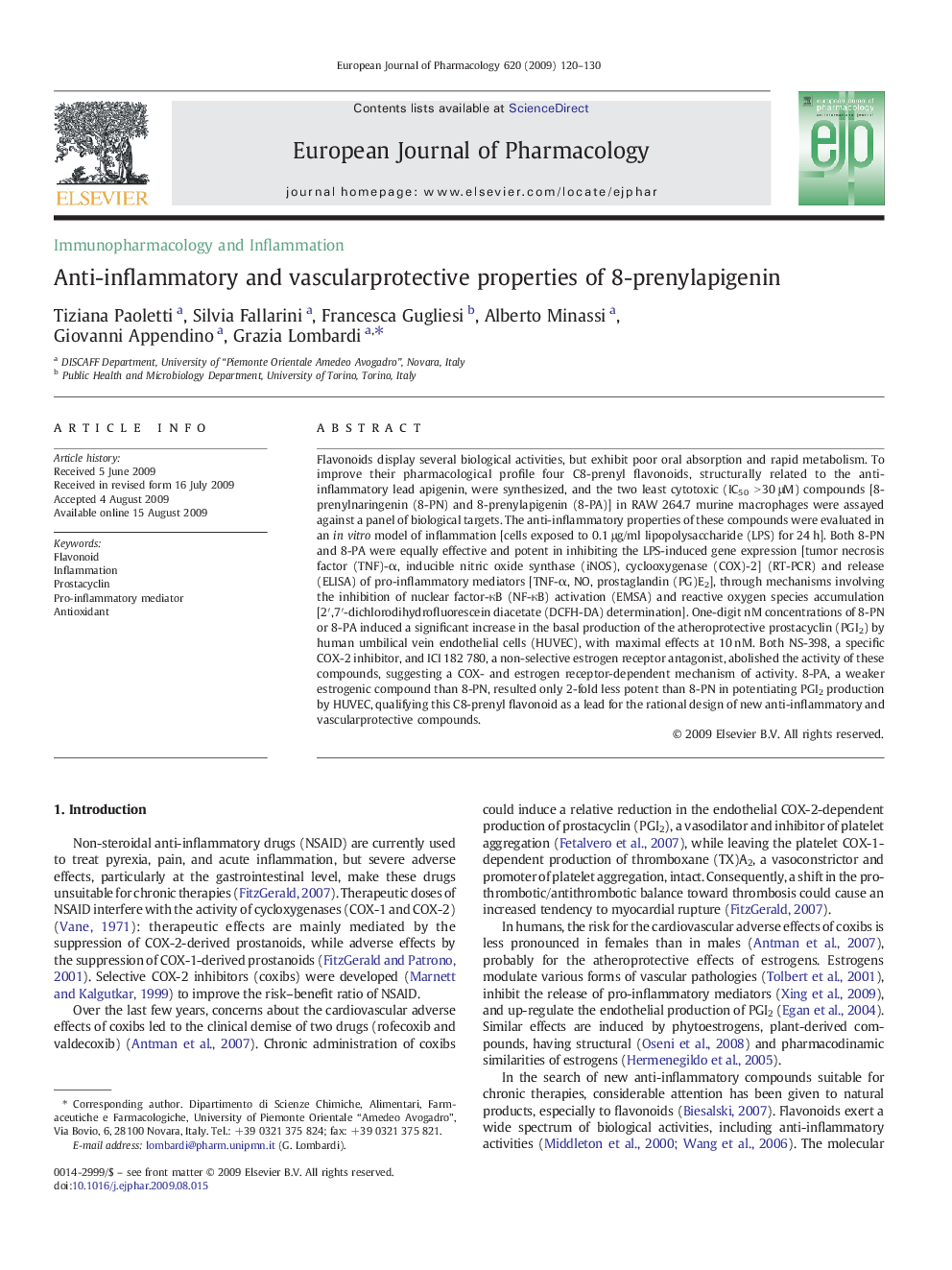| Article ID | Journal | Published Year | Pages | File Type |
|---|---|---|---|---|
| 2534056 | European Journal of Pharmacology | 2009 | 11 Pages |
Flavonoids display several biological activities, but exhibit poor oral absorption and rapid metabolism. To improve their pharmacological profile four C8-prenyl flavonoids, structurally related to the anti-inflammatory lead apigenin, were synthesized, and the two least cytotoxic (IC50 > 30 μM) compounds [8-prenylnaringenin (8-PN) and 8-prenylapigenin (8-PA)] in RAW 264.7 murine macrophages were assayed against a panel of biological targets. The anti-inflammatory properties of these compounds were evaluated in an in vitro model of inflammation [cells exposed to 0.1 μg/ml lipopolysaccharide (LPS) for 24 h]. Both 8-PN and 8-PA were equally effective and potent in inhibiting the LPS-induced gene expression [tumor necrosis factor (TNF)-α, inducible nitric oxide synthase (iNOS), cyclooxygenase (COX)-2] (RT-PCR) and release (ELISA) of pro-inflammatory mediators [TNF-α, NO, prostaglandin (PG)E2], through mechanisms involving the inhibition of nuclear factor-κB (NF-κB) activation (EMSA) and reactive oxygen species accumulation [2′,7′-dichlorodihydrofluorescein diacetate (DCFH-DA) determination]. One-digit nM concentrations of 8-PN or 8-PA induced a significant increase in the basal production of the atheroprotective prostacyclin (PGI2) by human umbilical vein endothelial cells (HUVEC), with maximal effects at 10 nM. Both NS-398, a specific COX-2 inhibitor, and ICI 182 780, a non-selective estrogen receptor antagonist, abolished the activity of these compounds, suggesting a COX- and estrogen receptor-dependent mechanism of activity. 8-PA, a weaker estrogenic compound than 8-PN, resulted only 2-fold less potent than 8-PN in potentiating PGI2 production by HUVEC, qualifying this C8-prenyl flavonoid as a lead for the rational design of new anti-inflammatory and vascularprotective compounds.
